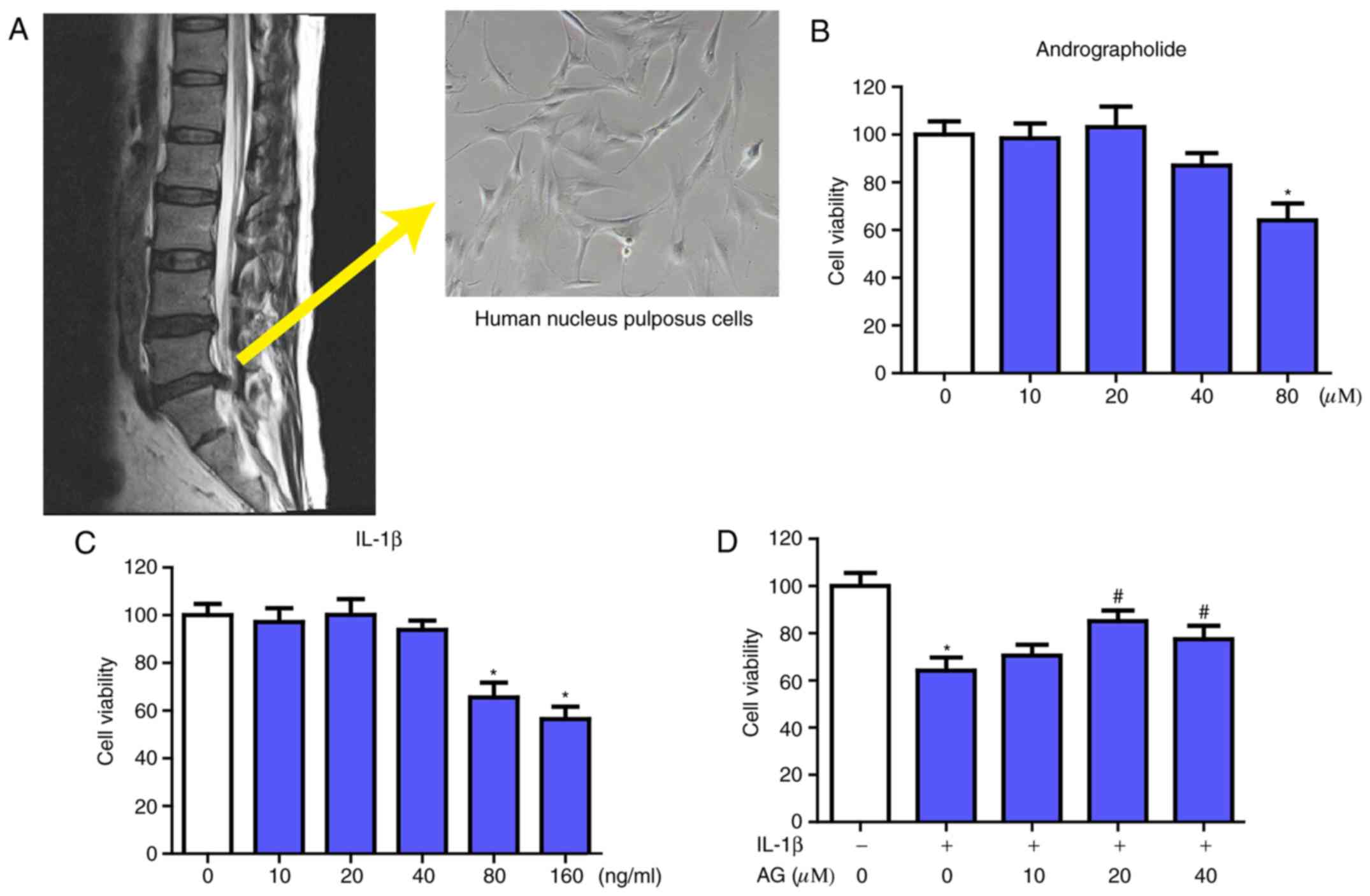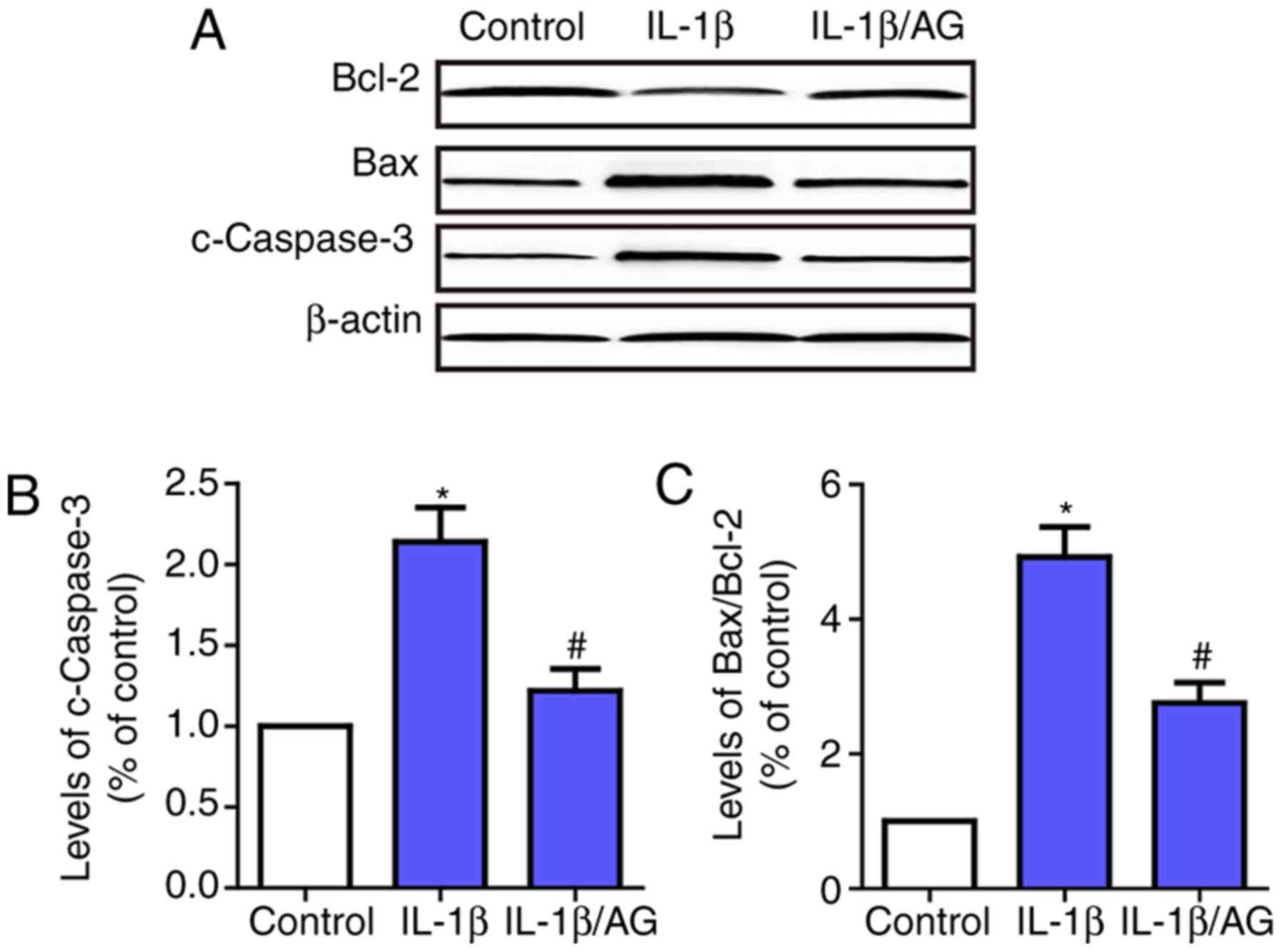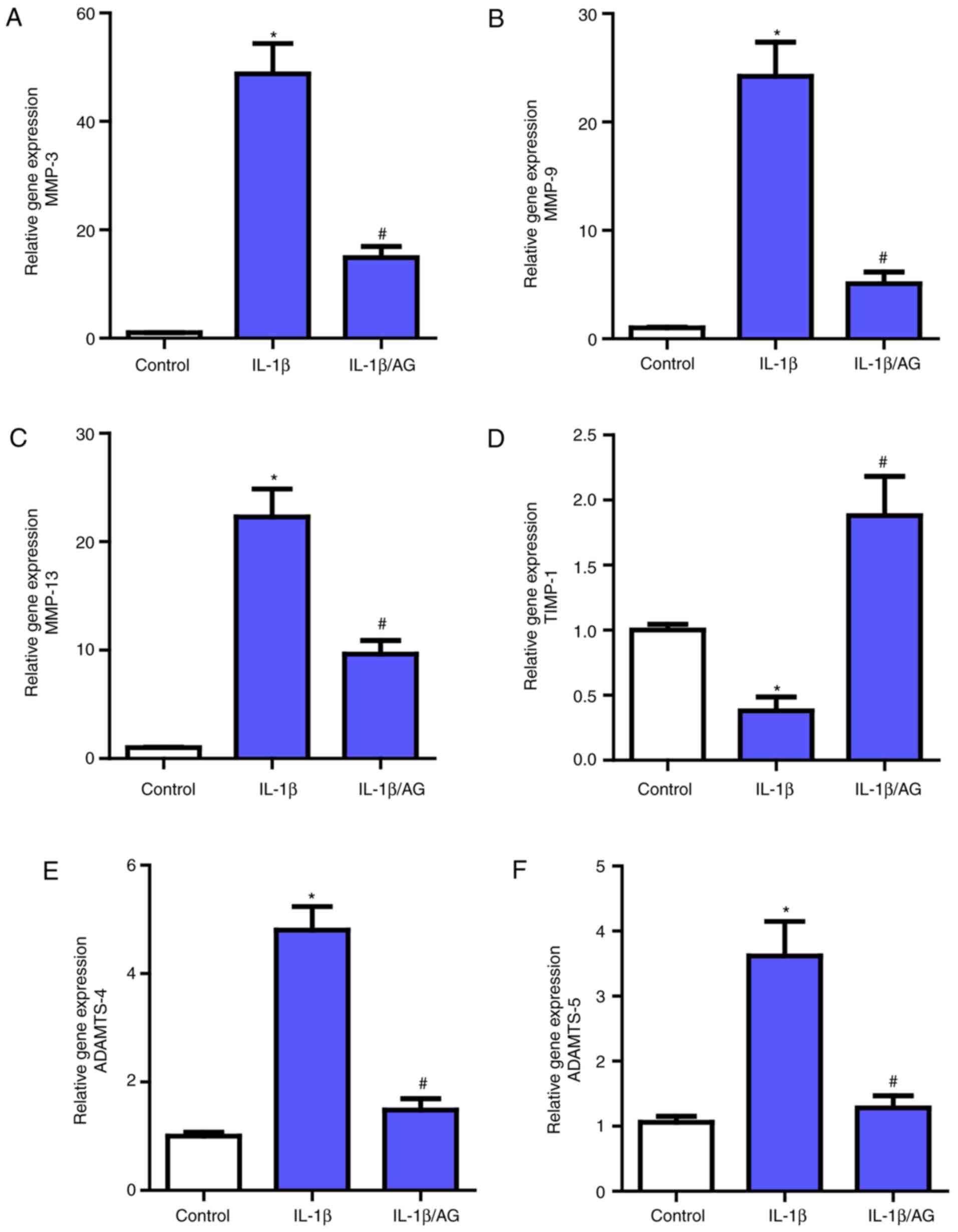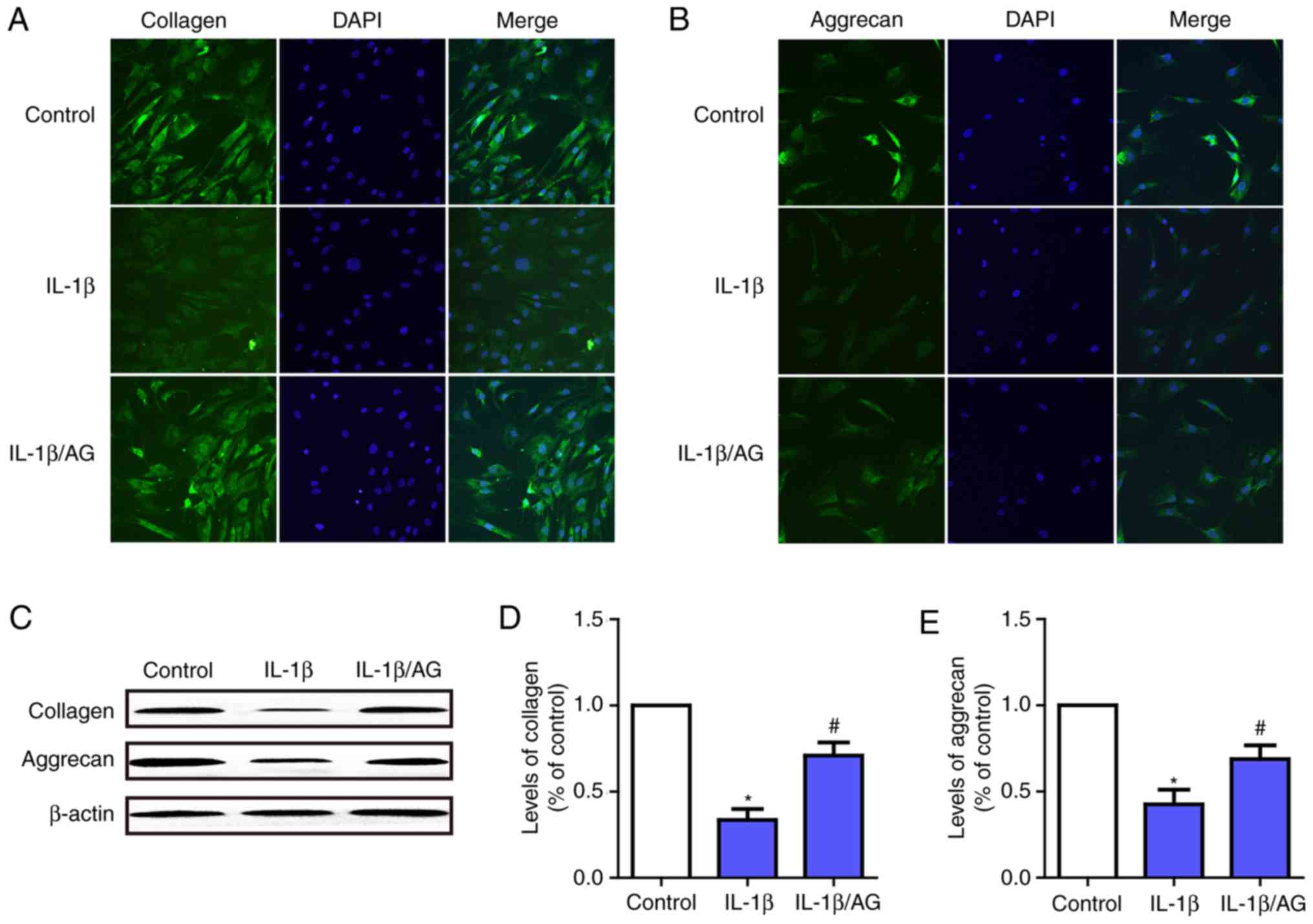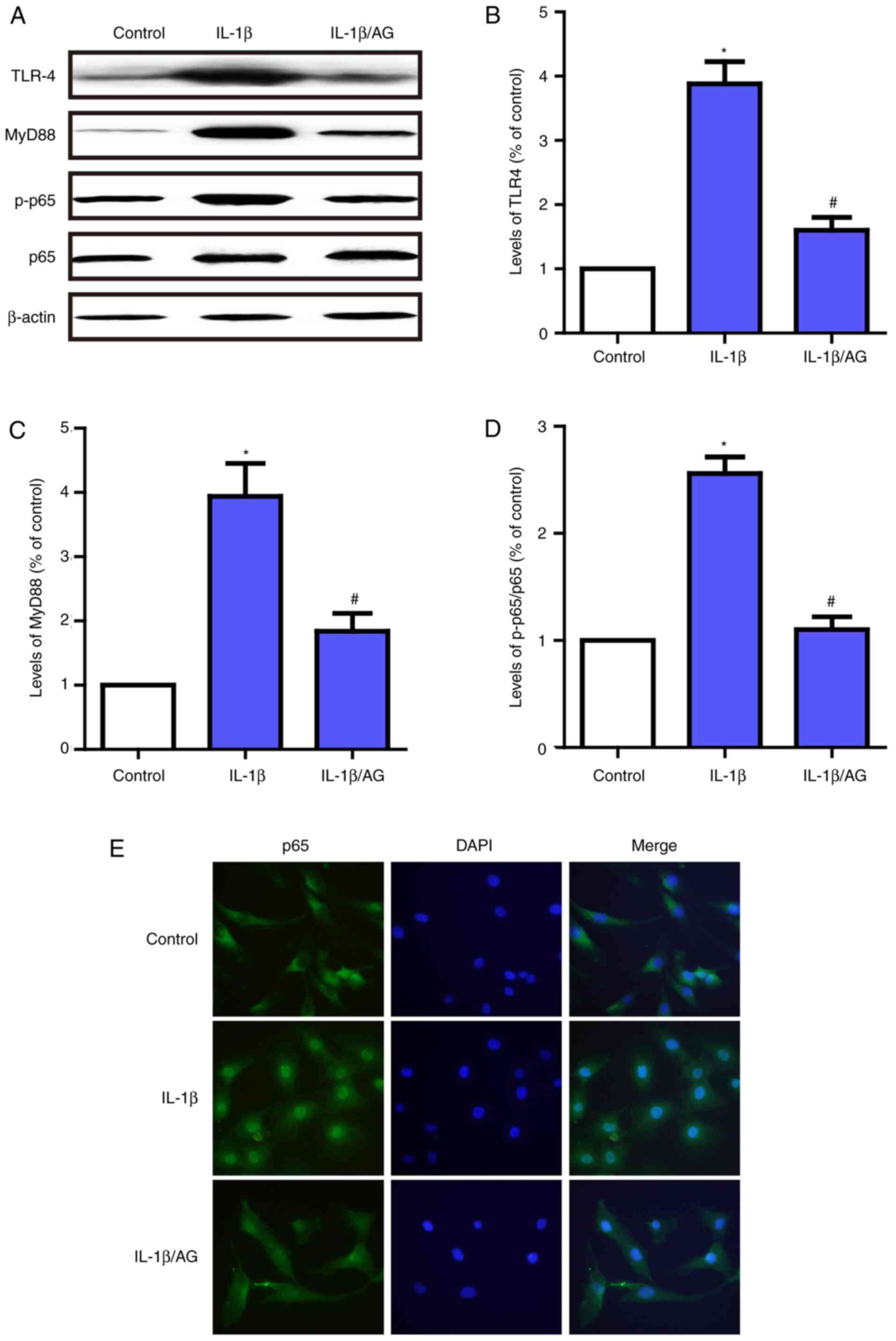|
1
|
Luoma K, Riihimäki H, Luukkonen R,
Raininko R, Viikari-Juntura E and Lamminen A: Low back pain in
relation to lumbar disc degeneration. Spine (Phila Pa 1976).
25:487–492. 2000. View Article : Google Scholar : PubMed/NCBI
|
|
2
|
Livshits G, Popham M, Malkin I, Sambrook
PN, Macgregor AJ, Spector T and Williams FM: Lumbar disc
degeneration and genetic factors are the main risk factors for low
back pain in women: The UK Twin Spine Study. Ann Rheum Dis.
70:1740–1745. 2011. View Article : Google Scholar : PubMed/NCBI
|
|
3
|
Martin BI, Deyo RA, Mirza SK, Turner JA,
Comstock BA, Hollingworth W and Sullivan SD: Expenditures and
health status among adults with back and neck problems. JAMA.
299:656–664. 2008. View Article : Google Scholar : PubMed/NCBI
|
|
4
|
Lotz JC and Ulrich JA: Innervation,
inflammation, and hypermobility may characterize pathologic disc
degeneration: Review of animal model data. J Bone Joint Surg Am. 88
Suppl 2:76–82. 2006. View Article : Google Scholar : PubMed/NCBI
|
|
5
|
Vo N, Niedernhofer LJ, Nasto LA, Jacobs L,
Robbins PD, Kang J and Evans CH: An overview of underlying causes
and animal models for the study of age-related degenerative
disorders of the spine and synovial joints. J Orthop Res.
31:831–837. 2013. View Article : Google Scholar : PubMed/NCBI
|
|
6
|
Froud R, Patterson S, Eldridge S, Seale C,
Pincus T, Rajendran D, Fossum C and Underwood M: A systematic
review and meta-synthesis of the impact of low back pain on
people's lives. BMC Musculoskel Dis. 15:502014. View Article : Google Scholar
|
|
7
|
Vergroesen PP, Kingma I, Emanuel KS,
Hoogendoorn RJ, Welting TJ, van Royen BJ, van Dieën JH and Smit TH:
Mechanics and biology in intervertebral disc degeneration: A
vicious circle. Osteoarthritis Cartilage. 23:1057–1070. 2015.
View Article : Google Scholar : PubMed/NCBI
|
|
8
|
Kepler CK, Ponnappan RK, Tannoury CA,
Risbud MV and Anderson DG: The molecular basis of intervertebral
disc degeneration. Spine J. 13:318–330. 2013. View Article : Google Scholar : PubMed/NCBI
|
|
9
|
Hangai M, Kaneoka K, Kuno S, Hinotsu S,
Sakane M, Mamizuka N, Sakai S and Ochiai N: Factors associated with
lumbar intervertebral disc degeneration in the elderly. Spine J.
8:732–740. 2008. View Article : Google Scholar : PubMed/NCBI
|
|
10
|
Pockert AJ, Richardson SM, Le Maitre CL,
Lyon M, Deakin JA, Buttle DJ, Freemont AJ and Hoyland JA: Modified
expression of the ADAMTS enzymes and tissue inhibitor of
metalloproteinases 3 during human intervertebral disc degeneration.
Arthritis Rheum. 60:482–491. 2009. View Article : Google Scholar : PubMed/NCBI
|
|
11
|
Bachmeier BE, Nerlich A, Mittermaier N,
Weiler C, Lumenta C, Wuertz K and Boos N: Matrix metalloproteinase
expression levels suggest distinct enzyme roles during lumbar disc
herniation and degeneration. Eur Spine J. 18:1573–1586. 2009.
View Article : Google Scholar : PubMed/NCBI
|
|
12
|
Roberts S, Caterson B, Menage J, Evans EH,
Jaffray DC and Eisenstein SM: Matrix metalloproteinases and
aggrecanase: Their role in disorders of the human intervertebral
disc. Spine (Phila Pa 1976). 25:3005–3013. 2000. View Article : Google Scholar : PubMed/NCBI
|
|
13
|
Le Maitre CL, Freemont AJ and Hoyland JA:
Localization of degradative enzymes and their inhibitors in the
degenerate human intervertebral disc. J Pathol. 204:47–54. 2004.
View Article : Google Scholar : PubMed/NCBI
|
|
14
|
Wang L, Wu Y, Tan Y, Fei X, Deng Y, Cao H,
Chen B, Wang H, Magdalou J and Chen L: Cytotoxic effects of the
quinolone levofloxacin on rabbit meniscus cells. J Appl Toxicol.
34:870–877. 2014. View
Article : Google Scholar : PubMed/NCBI
|
|
15
|
Zhou GQ, Yang F, Leung VVL and Cheung KMC:
Molecular and cellular biology of the intervertebral disc and the
use of animal models. Curr Orthopaed. 22:267–273. 2008. View Article : Google Scholar
|
|
16
|
Yang SD, Yang DL, Sun YP, Wang BL, Ma L,
Feng SQ and Ding WY: 17β-estradiol protects against apoptosis
induced by interleukin-1β in rat nucleus pulposus cells by
down-regulating MMP-3 and MMP-13. Apoptosis. 20:348–357. 2015.
View Article : Google Scholar : PubMed/NCBI
|
|
17
|
Baker RG, Hayden MS and Ghosh S: NF-κB,
inflammation, and metabolic disease. Cell Metab. 13:11–22. 2011.
View Article : Google Scholar : PubMed/NCBI
|
|
18
|
Wuertz K, Vo N, Kletsas D and Boos N:
Inflammatory and catabolic signalling in intervertebral discs: The
roles of NF-κB and MAP kinases. Eur Cells Mater. 23:103–119;
discussion 119–119. 2012.
|
|
19
|
Zhongyi S, Sai Z, Chao L and Jiwei T:
Effects of nuclear factor kappa B signaling pathway in human
intervertebral disc degeneration. Spine (Phila Pa 1976).
40:224–232. 2015. View Article : Google Scholar : PubMed/NCBI
|
|
20
|
Mulla MJ, Brosens JJ, Chamley LW, Giles I,
Pericleous C, Rahman A, Joyce SK, Panda B, Paidas MJ and Abrahams
VM: Antiphospholipid antibodies induce a pro-inflammatory response
in first trimester trophoblast via the TLR4/MyD88 pathway. Am J
Reprod Immunol. 62:96–111. 2009. View Article : Google Scholar : PubMed/NCBI
|
|
21
|
Kyo F, Futani H, Matsui K, Terada M,
Adachi K, Nagata K, Sano H, Tateishi H, Tsutsui H and Nakanishi K:
Endogenous interleukin-6, but not tumor necrosis factor alpha,
contributes to the development of toll-like receptor 4/myeloid
differentiation factor 88-mediated acute arthritis in mice.
Arthritis Rheum. 52:2530–2540. 2005. View Article : Google Scholar : PubMed/NCBI
|
|
22
|
Biragyn A, Coscia M, Nagashima K, Sanford
M, Young HA and Olkhanud P: Murine beta-defensin 2 promotes
TLR-4/MyD88-mediated and NF-kappaB-dependent atypical death of APCs
via activation of TNFR2. J Leukoc Biol. 83:998–1008. 2008.
View Article : Google Scholar : PubMed/NCBI
|
|
23
|
Vijayan V, Khandelwal M, Manglani K, Gupta
S and Surolia A: Methionine down-regulates TLR4/MyD88/NF-κB
signalling in osteoclast precursors to reduce bone loss during
osteoporosis. Br J Pharmacol. 171:107–121. 2014. View Article : Google Scholar : PubMed/NCBI
|
|
24
|
Zhang QQ, Ding Y, Lei Y, Qi CL, He XD, Lan
T, Li JC, Gong P, Yang X, Geng JG and Wang LJ: Andrographolide
suppress tumor growth by inhibiting TLR4/NF-κB signaling activation
in insulinoma. Int J Biol Sci. 10:404–414. 2014. View Article : Google Scholar : PubMed/NCBI
|
|
25
|
Sheeja K and Kuttan G: Activation of
cytotoxic T lymphocyte responses and attenuation of tumor growth in
vivo by Andrographis paniculata extract and andrographolide.
Immunopharmacol Immunotoxicol. 29:81–93. 2007. View Article : Google Scholar : PubMed/NCBI
|
|
26
|
Wintachai P, Kaur P, Lee RC, Ramphan S,
Kuadkitkan A, Wikan N, Ubol S, Roytrakul S, Chu JJ and Smith DR:
Activity of andrographolide against chikungunya virus infection.
Sci Rep. 5:141792015. View Article : Google Scholar : PubMed/NCBI
|
|
27
|
Chiou WF, Chen CF and Lin JJ: Mechanisms
of suppression of inducible nitric oxide synthase (iNOS) expression
in RAW 264.7 cells by andrographolide. Br J Pharmacol.
129:1553–1560. 2000. View Article : Google Scholar : PubMed/NCBI
|
|
28
|
Lu WJ, Lin KH, Hsu MJ, Chou DS, Hsiao G
and Sheu JR: Suppression of NF-κB signaling by andrographolide with
a novel mechanism in human platelets: Regulatory roles of the p38
MAPK-hydroxyl radical-ERK2 cascade. Biochem Pharmacol. 84:914–924.
2012. View Article : Google Scholar : PubMed/NCBI
|
|
29
|
Ding QH, Ji XW, Cheng Y, Yu YQ, Qi YY and
Wang XH: Inhibition of matrix metalloproteinases and inducible
nitric oxide synthase by andrographolide in human osteoarthritic
chondrocytes. Mod Rheumatol. 23:1124–1132. 2013. View Article : Google Scholar : PubMed/NCBI
|
|
30
|
Burgos RA, Seguel K, Perez M, Meneses A,
Ortega M, Guarda MI, Loaiza A and Hancke JL: Andrographolide
inhibits IFN-gamma and IL-2 cytokine production and protects
against cell apoptosis. Planta Med. 71:429–434. 2005. View Article : Google Scholar : PubMed/NCBI
|
|
31
|
Zhang J, Zhu D, Wang Y and Ju Y:
Andrographolide attenuates LPS-induced cardiac malfunctions through
inhibition of IκB phosphorylation and apoptosis in mice. Cell
Physiol Biochem. 37:1619–1628. 2015. View Article : Google Scholar : PubMed/NCBI
|
|
32
|
Pfirrmann CW, Metzdorf A, Zanetti M,
Hodler J and Boos N: Magnetic resonance classification of lumbar
intervertebral disc degeneration. Spine (Phila Pa 1976).
26:1873–1878. 2001. View Article : Google Scholar : PubMed/NCBI
|
|
33
|
Livak KJ and Schmittgen TD: Analysis of
relative gene expression data using real-time quantitative PCR and
the 2(-Delta Delta C(T)) method. Methods. 25:402–408. 2001.
View Article : Google Scholar : PubMed/NCBI
|
|
34
|
Kim J, Choi Y, Ahn M, Jung K and Shin T:
Olfactory dysfunction in autoimmune central nervous system
neuroinflammation. Mol Neurobiol. 55:8499–8508. 2018. View Article : Google Scholar : PubMed/NCBI
|
|
35
|
Risbud MV and Shapiro IM: Role of
cytokines in intervertebral disc degeneration: Pain and disc
content. Nat Rev Rheumatol. 10:44–56. 2014. View Article : Google Scholar : PubMed/NCBI
|
|
36
|
Hoyland JA, Le Maitre C and Freemont AJ:
Investigation of the role of IL-1 and TNF in matrix degradation in
the intervertebral disc. Rheumatology (Oxford). 47:809–814. 2008.
View Article : Google Scholar : PubMed/NCBI
|
|
37
|
Smith LJ, Chiaro JA, Nerurkar NL, Cortes
DH, Horava SD, Hebela NM, Mauck RL, Dodge GR and Elliott DM:
Nucleus pulposus cells synthesize a functional extracellular matrix
and respond to inflammatory cytokine challenge following long-term
agarose culture. Eur Cells Mater. 22:291–301. 2011. View Article : Google Scholar
|
|
38
|
Le Maitre CL, Freemont AJ and Hoyland JA:
The role of interleukin-1 in the pathogenesis of human
intervertebral disc degeneration. Arthritis Res Ther. 7:R732–R745.
2005. View
Article : Google Scholar : PubMed/NCBI
|
|
39
|
Lee JM, Song JY, Baek M, Jung HY, Kang H,
Han IB, Kwon YD and Shin DE: Interleukin-1β induces angiogenesis
and innervation in human intervertebral disc degeneration. J Orthop
Res. 29:265–269. 2011. View Article : Google Scholar : PubMed/NCBI
|
|
40
|
Zhang CC, Cui GP, Hu JG, Xiao YZ, Zhou XS,
Shao C, Lin Q and Zhou JS: Effects of adenoviral vector expressing
hIGF-1 on apoptosis in nucleus pulposus cells in vitro. Int J Mol
Med. 33:401–405. 2014. View Article : Google Scholar : PubMed/NCBI
|
|
41
|
Yang D, Wang D, Shimer A, Shen FH, Li X
and Yang X: Glutathione protects human nucleus pulposus cells from
cell apoptosis and inhibition of matrix synthesis. Connect Tissue
Res. 55:132–139. 2014. View Article : Google Scholar : PubMed/NCBI
|
|
42
|
Feng H, Danfelter M, Strömqvist B and
Heinegård D: Extracellular matrix in disc degeneration. J Bone
Joint Surg Am. 88 Suppl 2:25–29. 2006. View Article : Google Scholar : PubMed/NCBI
|
|
43
|
Vo NV, Hartman RA, Yurube T, Jacobs LJ,
Sowa GA and Kang JD: Expression and regulation of
metalloproteinases and their inhibitors in intervertebral disc
aging and degeneration. Spine J. 13:331–341. 2013. View Article : Google Scholar : PubMed/NCBI
|
|
44
|
Yang JP, Hori M, Sanda T and Okamoto T:
Identification of a novel inhibitor of nuclear factor-kappaB,
RelA-associated inhibitor. J Biol Chem. 274:15662–15670. 1999.
View Article : Google Scholar : PubMed/NCBI
|
|
45
|
Frank S, Peters MA, Wehmeyer C, Strietholt
S, Koers-Wunrau C, Bertrand J, Heitzmann M, Hillmann A, Sherwood J,
Seyfert C, et al: Regulation of matrixmetalloproteinase-3 and
matrixmetalloproteinase-13 by SUMO-2/3 through the transcription
factor NF-κB. Ann Rheum Dis. 72:1874–1881. 2013. View Article : Google Scholar : PubMed/NCBI
|
|
46
|
Peng S, Gao J, Liu W, Jiang C, Yang X, Sun
Y, Guo W and Xu Q: Andrographolide ameliorates OVA-induced lung
injury in mice by suppressing ROS-mediated NF-κB signaling and
NLRP3 inflammasome activation. Oncotarget. 7:80262–80274. 2016.
View Article : Google Scholar : PubMed/NCBI
|
|
47
|
Yamamoto M, Sato S, Hemmi H, Hoshino K,
Kaisho T, Sanjo H, Takeuchi O, Sugiyama M, Okabe M, Takeda K and
Akira S: Role of adaptor TRIF in the MyD88-independent toll-like
receptor signaling pathway. Science. 301:640–643. 2003. View Article : Google Scholar : PubMed/NCBI
|















